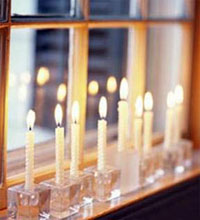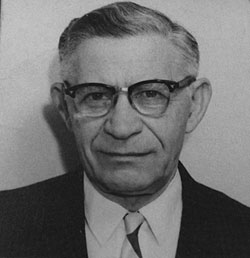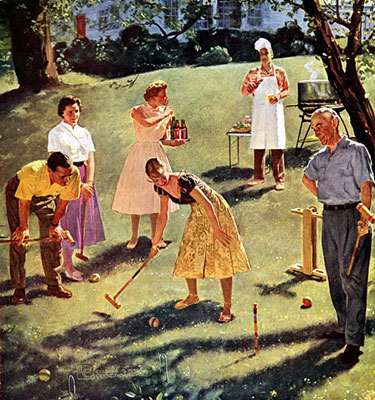 It’s not easy being Jewish during the Christmas season, especially if
you’re a kid. Chanukah is great, don’t get me wrong. Presents for eight
nights in a row. Lighting the candles and watching them flicker in the
menorah until they gradually fade away. And I’m a big fan of the latke.
But compared to Christmas? Really?
It’s not easy being Jewish during the Christmas season, especially if
you’re a kid. Chanukah is great, don’t get me wrong. Presents for eight
nights in a row. Lighting the candles and watching them flicker in the
menorah until they gradually fade away. And I’m a big fan of the latke.
But compared to Christmas? Really?
Imagine, then, what my son Luke had to contend with, growing up Jewish
and having an older brother who got to celebrate Chanukah and Christmas
while he celebrated only the Festival of Lights. And it was all my
fault. I married a non-Jew, had a son with him and got divorced. Then I
met my true love (Luke’s father) and created our modern nuclear family.
Three Jews and a mixed-breed (sorry, Craig), who marched in a Christmas
pageant at his father’s church wearing the robe of a king – the same
year he was deep in preparation for his bar mitzvah. Holiday time in
our household was always a bit fraught.
Christmas
Christmas
A Homemade Christmas? I'd Think Twice About That
 Everyone I know espouses the virtue of a homemade Christmas, and I
have to admit that when someone takes the time to make me something I
am genuinely touched by the act and the sentiment that goes along with
it. That said, have you ever decided to take on a project that grew so
far beyond its original scale and intent that you regretted it? As my
family and friends can attest to, I am famous for that kind of thing.
But something about the holidays seems to blindly motivate me toward
this type of endeavor year after year.
Everyone I know espouses the virtue of a homemade Christmas, and I
have to admit that when someone takes the time to make me something I
am genuinely touched by the act and the sentiment that goes along with
it. That said, have you ever decided to take on a project that grew so
far beyond its original scale and intent that you regretted it? As my
family and friends can attest to, I am famous for that kind of thing.
But something about the holidays seems to blindly motivate me toward
this type of endeavor year after year.
Like the time I decided to make “simple” cranberry wreaths just like the ones I had seen Martha Stewart make on her TV show. I bought the requisite Styrofoam forms from a craft store and what seemed like a bazillion toothpicks that would have lasted a family of four a lifetime, as well as several bags of the dark red berries and a few feet of nice green ribbon to make bows with. After going through the first two bags of berries, and Lord knows how many toothpicks, I took my permanently stained hands back to the grocery store to load up on more supplies. The check out girl just laughed at me when I handed her a fist full of pink bills and wished me good luck with whatever I was doing.
Twenty four hours later I was a mad man, half blinded from trying to push the toothpicks evenly into the form and wearing thimbles (or anything else I could find) to cover my sore fingers, vowing to complete the task that was now driving me crazy. I was possessed and in the process ruined a favorite shirt and an equally beloved pair of pants. After what seemed to me an eternity, I eventually finished. Proudly hanging the wreath on my front door, I stood back to admire my handy work.
Mail Order Food
 I associate mail order food with my father. When I was growing up, he and I had very few connections. He took me to only one professional football game. He never came to Back-to-School Night and had no interest in any of my hobbies. I remember him as dour, not very talkative and disapproving. I was part of his second family and he was, I’m certain, just a bit too old to have a young kid running around.
I associate mail order food with my father. When I was growing up, he and I had very few connections. He took me to only one professional football game. He never came to Back-to-School Night and had no interest in any of my hobbies. I remember him as dour, not very talkative and disapproving. I was part of his second family and he was, I’m certain, just a bit too old to have a young kid running around.
Added to that, my father was burdened by tragedy. He was the eldest son of a prosperous Jewish family in Odessa on the Black Sea. Unfortunately when the Russian Revolution swept across the country, Bolsheviks rampaged through his neighborhood, lining up and shooting many people, including my father’s family. Being Jewish and well-to-do were two strikes too many at a time when “line them up against the wall” was taken literally.
Luckily for my father, when all this happened, he was studying at the University of Kiev. He learned later that his mother had survived because she had very thick hair. When she was shot at point blank range, the gunpowder was apparently so weak that the bullet merely lodged in her hair, knocking her unconscious and otherwise leaving her unharmed. My father never returned home to Odessa, having been told that he needed to flee the country, which he promptly did.
“Old Country” Hungarian for Christmas
 My Hungarian grandma came to the United States when she was just a teenager. Her husband came before her to find a place for them to settle. She left her family behind to travel to a land of opportunity where she and her young husband believed they could create a better life for their family. Young Rose arrived with their first-born, a son, who was still a baby. I’ve often wondered what it was like for my grandma to be in a strange country, a place where she could barely communicate with the people around her and where she had no family or friends, just her Hungarian husband.
My Hungarian grandma came to the United States when she was just a teenager. Her husband came before her to find a place for them to settle. She left her family behind to travel to a land of opportunity where she and her young husband believed they could create a better life for their family. Young Rose arrived with their first-born, a son, who was still a baby. I’ve often wondered what it was like for my grandma to be in a strange country, a place where she could barely communicate with the people around her and where she had no family or friends, just her Hungarian husband.
Over the years, Rose’s family grew as she and her husband ran their own boarding house and restaurant in Chicago. One day, when their four sons and one daughter were still very young, Rose’s husband decided to leave. He wanted to go back to “the old country.” Eventually, the strong and very hard-working single mother married again. She and her second husband, Paul, had one more son and one more daughter. They moved to a farm in Indiana to raise their seven children. Their daughter, Rosemary, the baby of the family, became my mom.
The five sons and two daughters grew into adults and moved away from their Indiana home, but I do not remember even one Christmas when they were not all together at the farm to celebrate together, coming back each year with spouses and children of their own.
In Season: Vegan Egg Nog
 It is a mystery to us why Egg Nog is so popular (even though we are big fans of dairy over here), but this recipe by Pure Bar Founder, Veronica Bosgraaf’s has us intrigued. It can be found in her cookbook, Pure Food, and seems to capture all the flavors of the season without all of the calories. It's more like an almond milkshake without the rum (that's why it's called nog), but to each their own. Cheers!
It is a mystery to us why Egg Nog is so popular (even though we are big fans of dairy over here), but this recipe by Pure Bar Founder, Veronica Bosgraaf’s has us intrigued. It can be found in her cookbook, Pure Food, and seems to capture all the flavors of the season without all of the calories. It's more like an almond milkshake without the rum (that's why it's called nog), but to each their own. Cheers!
Vegan Eggnog (Serves 4)
Ingredients:
2 cups almond milk, homemade or store-bought
1/4 cup spiced rum (optional)
1/2teaspoon ground cinnamon
1/2 teaspoon grated nutmeg
1/4 teaspoon vanilla extract
1/8 teaspoon sea salt
1/2 to 1 cup ice
In a blender, combine the almond milk, rum, cinnamon, nutmeg, vanilla, salt, and ice. Blend on low speed until smooth and serve immediately.
More Articles ...
Welcome to the new One for the Table ...
Our Home Page will be different each time you arrive.
We're sure you'll find something to pique your interest...


